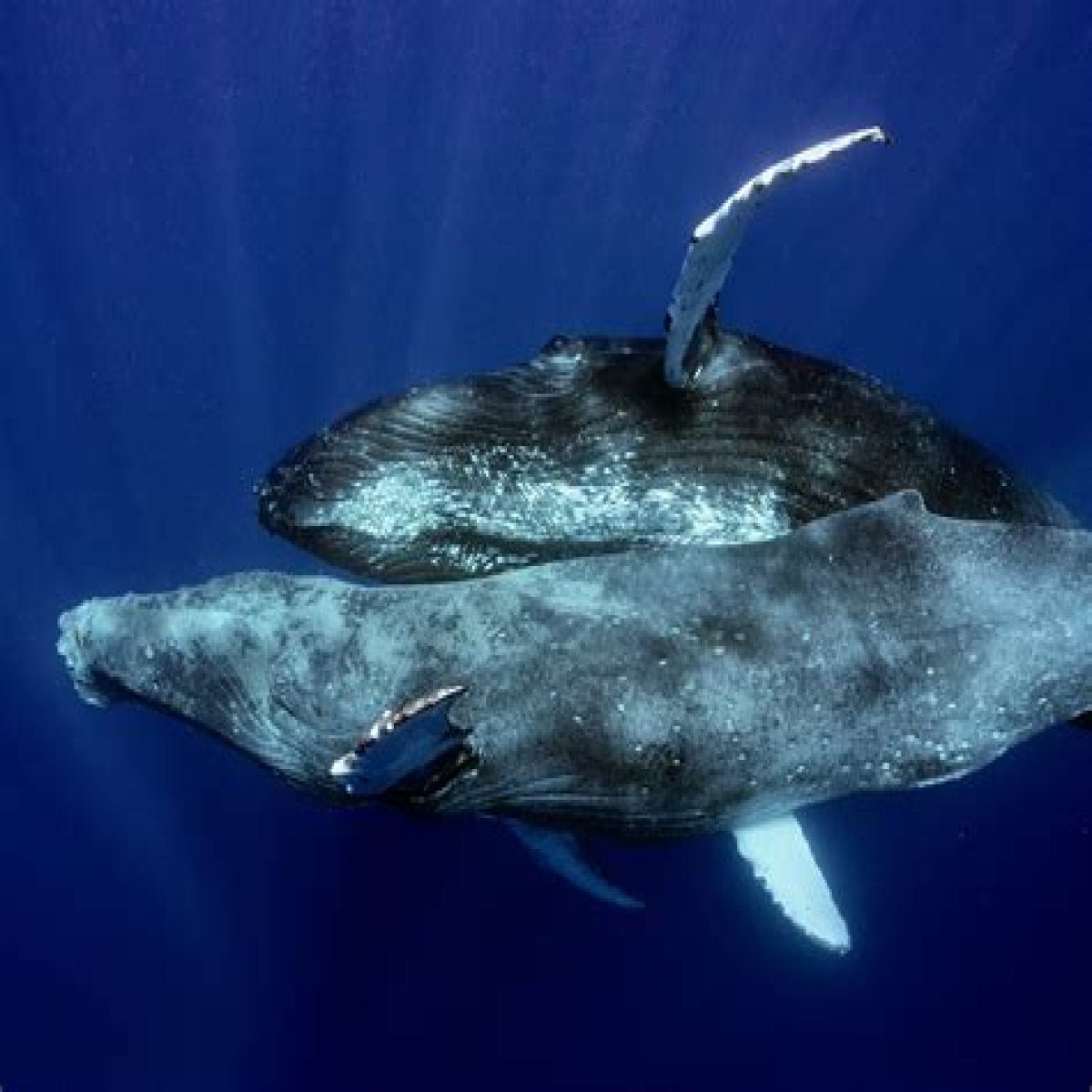What is Humpback Whale Mating? Humpback whale mating is a complex and fascinating process that takes place in the warm waters of the tropics. It is a time of great excitement and activity as the whales come together to find mates and produce offspring.
Humpback whales are large baleen whales that can grow up to 50 feet long and weigh up to 40 tons. They are known for their distinctive humped backs and long, flowing pectoral fins. Humpback whales are also known for their complex and beautiful songs, which they use to attract mates.
The humpback whale mating season typically lasts from June to November. During this time, the whales migrate to the warm waters of the tropics, where they find mates and give birth to their young. The males will compete for females by singing songs and displaying their pectoral fins. The females will choose the males that they find most attractive.
Once a pair of whales has mated, the female will give birth to a single calf after a gestation period of about 11 months. The calf will stay with its mother for about a year, during which time it will learn to swim, feed, and socialize.
Humpback Whale Mating: Key Aspects
Humpback whale mating is a complex process that involves several key aspects, including:
- Courtship: The male whales will compete for females by singing songs and displaying their pectoral fins.
- Mating: Once a pair of whales has mated, the female will give birth to a single calf after a gestation period of about 11 months.
- Nursing: The calf will stay with its mother for about a year, during which time it will learn to swim, feed, and socialize.
Courtship: The Male Perspective
The male humpback whales will begin their courtship by singing songs. These songs can be up to 20 minutes long and can be heard for miles. The songs are thought to attract females and help the males establish their dominance.
In addition to singing, the males will also display their pectoral fins. These fins can be up to 16 feet long and are used to slap the water and create a loud noise. The males will also use their fins to push and shove each other in an attempt to intimidate their rivals.
Mating: The Process
Once a male has attracted a female, the pair will begin to mate. The mating process can take several hours and can be quite physical. The male will use his pectoral fins to hold the female in place while he inserts his penis into her vagina.
The female humpback whale will typically give birth to a single calf after a gestation period of about 11 months. The calf will weigh about 2,000 pounds and will be about 15 feet long.
Nursing: The Mother-Calf Bond
The calf will stay with its mother for about a year, during which time it will learn to swim, feed, and socialize. The mother will also protect her calf from predators.
The bond between a mother humpback whale and her calf is very strong. The mother will often sing to her calf and will stay close to it at all times.
Conclusion
Humpback whale mating is a complex and fascinating process that is essential for the survival of the species. The males will compete for females by singing songs and displaying their pectoral fins. The females will choose the males that they find most attractive. Once a pair of whales has mated, the female will give birth to a single calf after a gestation period of about 11 months. The calf will stay with its mother for about a year, during which time it will learn to swim, feed, and socialize.
Frequently Asked Questions about Humpback Whale Mating
Here are some frequently asked questions about humpback whale mating:
Question 1: How often do humpback whales mate?
Answer: Humpback whales typically mate every two to three years.
Question 2: How long does a humpback whale pregnancy last?
Answer: A humpback whale pregnancy lasts for about 11 months.
Question 3: How long do humpback whale calves stay with their mothers?
Answer: Humpback whale calves stay with their mothers for about a year.
Question 4: What is the success rate of humpback whale mating?
Answer: The success rate of humpback whale mating is not fully known, but it is thought to be relatively low.
Question 5: What are the biggest threats to humpback whale mating?
Answer: The biggest threats to humpback whale mating are habitat loss, pollution, and climate change.
Summary: Humpback whale mating is a complex and fascinating process that is essential for the survival of the species. However, there are a number of threats to humpback whale mating, including habitat loss, pollution, and climate change. It is important to protect humpback whales and their habitat so that they can continue to mate and produce offspring.
Conclusion
Humpback whale mating is a complex and fascinating process that is essential for the survival of the species. However, there are a number of threats to humpback whale mating, including habitat loss, pollution, and climate change. It is important to protect humpback whales and their habitat so that they can continue to mate and produce offspring.
The future of humpback whale mating is uncertain. However, there is hope. A number of conservation organizations are working to protect humpback whales and their habitat. These organizations are working to reduce pollution, protect critical habitat, and combat climate change. With the help of these organizations, we can help to ensure that humpback whales continue to mate and produce offspring for generations to come.
No Scrubs Lyrics: The Ultimate Guide To The Iconic TLC HitGet Your Enchanting Congratulations Meme Now!Discover MSU Meridian: A Comprehensive Guide To Education And Excellence
